2023 Fall Festival Compilation

As I put together in 2022 and again for last Spring, here is a collection of the reviews I wrote for InReview Online's coverage of various film festivals from around the world. For publication here, the reviews have been re-edited and occasionally expanded. Check out the rest of the festival coverage at the site, they've got a lot of great writers writing about a lot of movies.
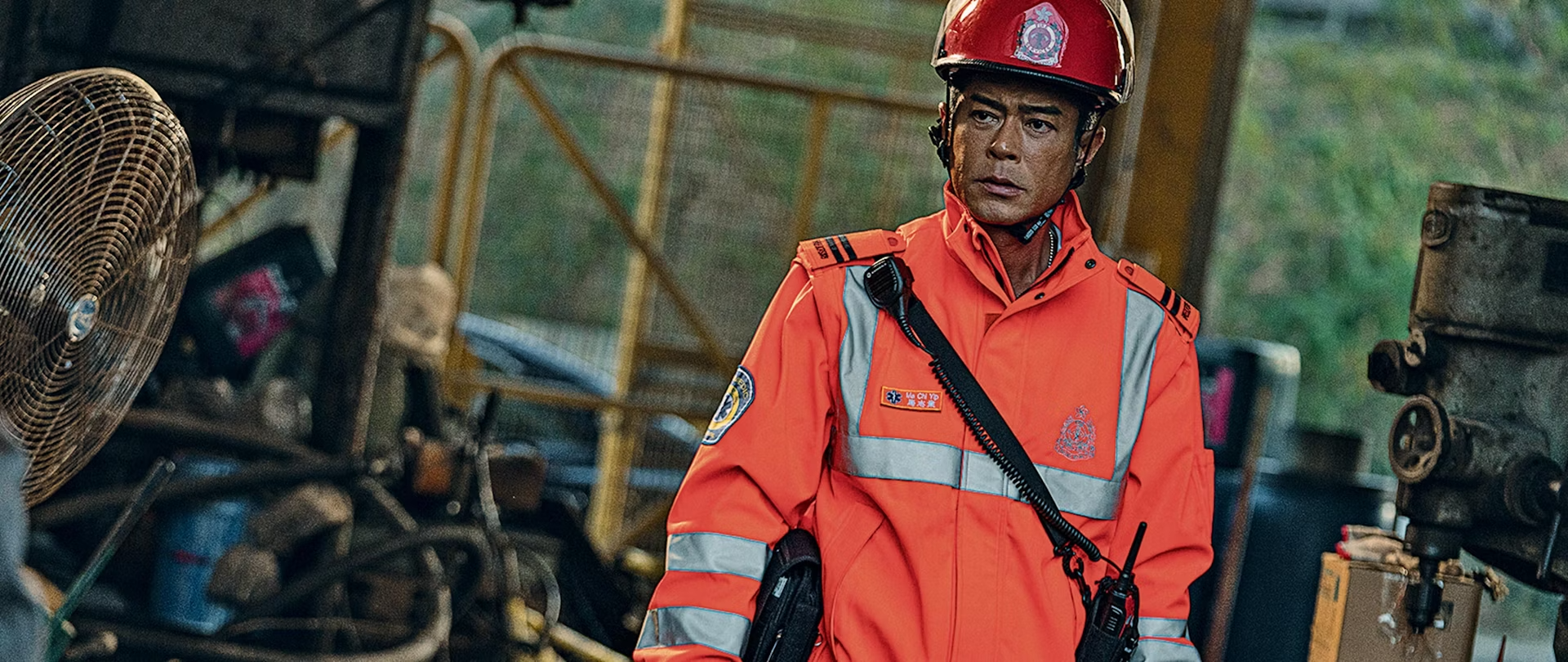
Vital Sign (Cheuk Wan-chi, 2023) - July 7, 2023
Cheuk Wan-chi is an accomplished director, screenwriter, and stand-up comedian in Hong Kong. She co-wrote Sylvia Chang’s excellent 2004 film 20 30 40, and Pang Ho-cheung’s not-as-good 2007 film Exodus. As an actress, she starred as one of the doomed minibus passengers in Fruit Chan’s apocalyptic 2014 masterpiece The Midnight After. That year she also wrote and directed the delightful real estate comedy Temporary Family, with Sammi Cheng, Nick Cheung, and the once-ubiquitous Angelababy. She’s finally followed that up with Vital Sign, her first feature in nine years. But it seems that the last decade of events in Hong Kong have sobered Cheuk up. Vital Sign shows none of the comic flair of her earlier work, and is in fact a downright dour melodrama about a widower EMT (the always-ubiquitous Louis Koo) who is trying to emigrate to Canada with his adorable moppet daughter while also dealing with an ambitious young colleague on track to get promoted ahead of him. It presents a sad vision of present-day Hong Kong, where all the energy is devoted to either climbing the bureaucratic ladder for no reason other than that it’s there, or simply toward getting as far away from the former colony as one can.
Koo is, as usual, terrific in the lead role. He’s always been charming, but there’s a weariness to his performance here befitting his age, unlike his action hero role in last year’s sci-fi epic Warriors of Future. A remarkably consistent thread through all his work has been the disintegration of his body: in film after film, the former model Koo suffers a endless array of ailments, maimings, and other physical misfortunes. In his films, Louis Koo, like Hong Kong itself, is always falling apart, and Vital Sign is no exception. Here he’s plagued by a bad back caused by a form of spondylitis that, without the surgery he can’t afford, limits his ability to do his job and diminishes his chances of being approved for emigration. He’s a simple, competent man: all he wants to do is save people’s lives and hang out with his daughter, but events far outside his control are conspiring to prevent him from doing either. The parallels to life in a city scarred by a decade of political instability, recurring pandemics, and a net population loss are unmistakable.
This being a Hong Kong movie, there are of course action scenes. They’re of the EMT rescue variety, but by the standards of films like Dante Lam’s recent The Rescue (2020) or even a run of the mill episode of ER, they are pretty tame and uninvolving. Koo saves people with his calm clear-headedness, and then moves on to the next rescue. His partner, played by Yau Hawk-sau (Ten Years, No. 1 Chung Ying Street) is a new variation on the strivers we’ve seen in many a Hong Kong film over the years (often played by Michael Wong or a Michael Wong type). Obsessed with advancement, he’s shot up the EMT ranks in record time, his goal only to achieve the kind of desk job that Koo, devoted to the work of rescuing people, has always eschewed. Working with Koo though humanizes him, as does a budding relationship with Koo’s cousin-in-law Miffy, a foul-mouthed nurse played by Angela Yuen (Chili Laugh Story, The Narrow Road). Yeun brings the most spark of any of the performers, but even the young people’s relationship, which should be a source of hope for the future, is premised on the fact that neither of them wants children (though they both adore Koo’s moppet). Vital Sign sees no future in Hong Kong, just the slow dissolution of the past and a resigned hanging on in the present.
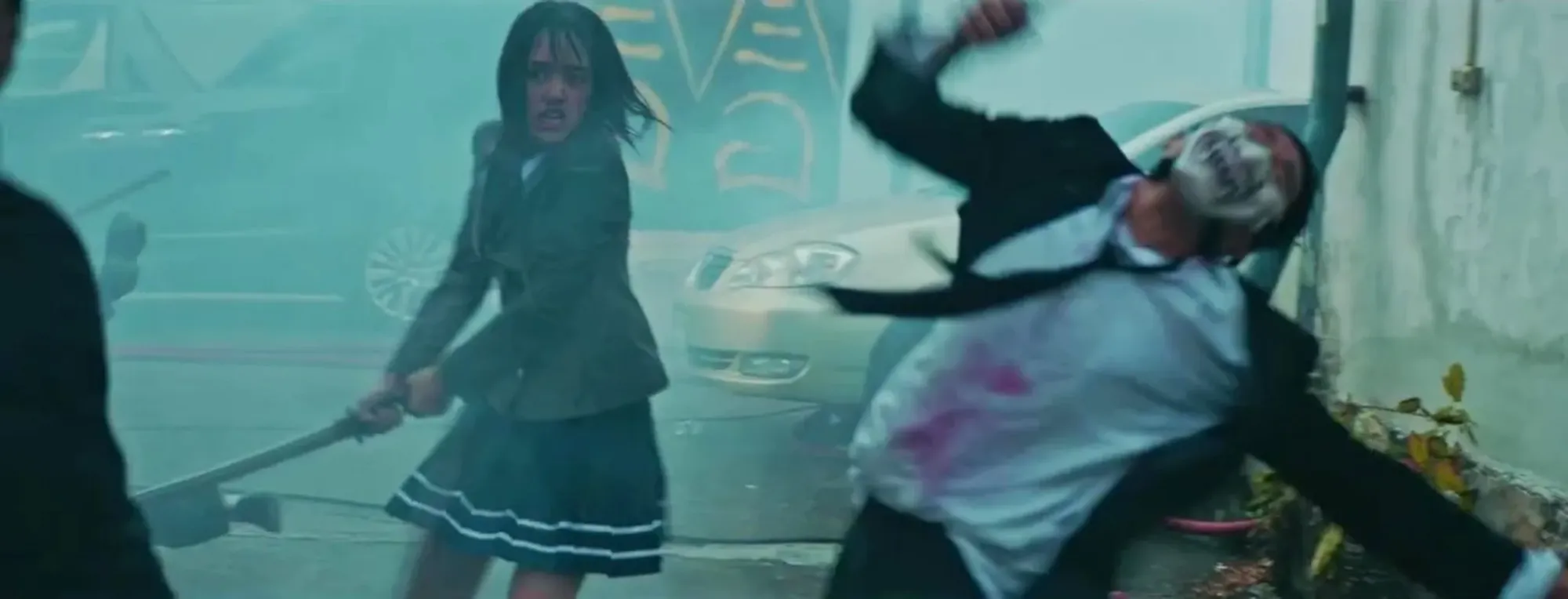
Kitty the Killer (Lee Thongkham, 2023) - July 10, 2023
Of all the John Wick knockoffs that I’ve seen over the last decade, Kitty the Killer is almost certainly the first one that came from Thailand. For better and worse, we’ve seen more movies than I can possibly remember in recent years about assassins working within shadowy, often nonsensical organizations loaded with back story and lore doing their best to survive against an army of anonymous enemies in black suits aided by nothing other than the remarkable skills of stunt workers and the ingenuity of their choreographers, dispatching said enemies in an orgy of flashy camera movements and splattering of computer-generated blood. It must be said that this era has been a drastic improvement on the last one, when every action movie aped the dull gray tones and incomprehensible editing of the Paul Greengrass Bourne movies. While that era did give us a few gems (the works of Neveldine and Taylor stand-out in particular), the average action film of the last decade is surely better than the average film of the prior era (note here that the biggest blockbusters of the 21st century, your MCUs and Batmans and Worlds Jurassic are not action film but rather disaster movies: their pleasure comes not from seeing elaborate stunts performed by skilled professionals, but rather ever more monotonous displays of destruction, usually of phony environments, in either mass explosions or, at best, vehicular chase sequences). Sure there are a lot of annoying ticks in the current state of the genre cycle: black and neon pink color schemes, cutesy humor, substitution of subpar CGI fakery for practical make-up and stunt work, but by and large we’re in, if not a golden age of action cinema, at least a bronze one.
Kitty the Killer is a middling example of the contemporary action film. It’s about a shadowy organization of assassins wherein the killers are all young women and girls called “Kitties”, all of whom have some variation of a “-na” name: Tina, Mina, Nina, Rina, etc. Our hero is an assassin named Dina (Ploypailin Thangprapaporn), who has been tasked by her handler, “Gray Fox”, with stealing a box with a magic rock inside of it from a member of a rival organization. She gets the rock, but that causes inter-agency struggles and leads to Gray Fox’s own bosses turning against him and sending their top assassin, Nina the Faceless, after him. He dies, but not before passing on the mantle of Gray Fox onto a goofy young insurance salesman named Charlie.
At this point, Kitty the Killer has been pretty entertaining action movie, with cool ladies slicing heads off and bodies open with katanas while wearing masks and black leather. But this next chapter slows everything down for a long sequence of comic relief and world-building, as the goofball guy is trained and integrated into the system, and introduced to Dina’s companions. This all takes way too long, given how much it relies on Denkhun Ngamnet’s cartoonish performance as Charlie, all wild eyes and screaming and just generally being annoying. There are some interesting side stories with some of the women: Dina’s health problems, Tina’s alienation and loneliness, but they get lost in all the strained silliness.
All that would be bearable if the action was truly inspired, or the world as unhinged as something like the recent straight-to-video gem Mutant Ghost Wargirl, but alas, it settles for being merely competent. The most memorable part of the fight scenes, to be honest, are the costumes (the aforementioned masks and leather) and the eclectic mix of cultural influences (Japanese and American and Chinese and Thai). But still, none of it is bad, and as tedious as some of the comic bits can be, it’s never as gratingly obnoxious as something like Gunpowder Milkshake. But neither is it ever as inspired as the likes of Baby Assassins or Veronica Ngo’s Furie movies. It’s OK.
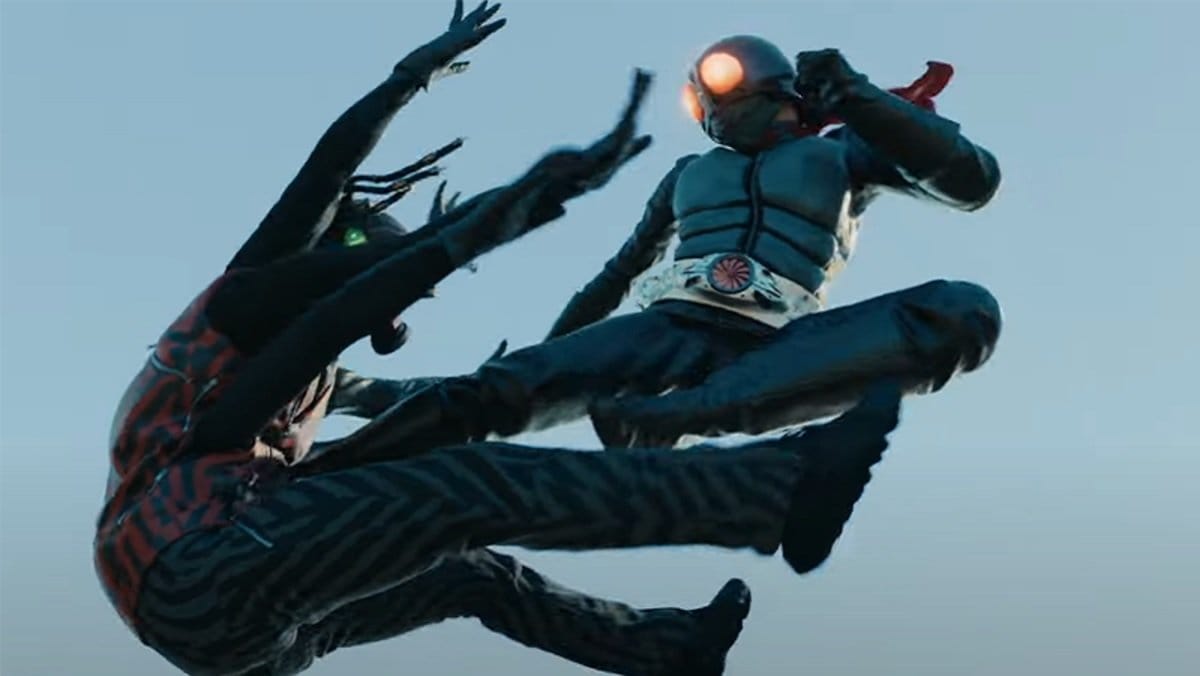
Shin Kamen Rider (Anno Hideaki, 2023) - July 31, 2023
The latest in Anno Hideaki’s reimagining of classic Japanese tokusatsu stories, following Shin Godzilla, Shin Ultraman, and, depending on how you look at it, Evangelion: 3.0+1.0 Thrice Upon a Time (Shin Evangelion in its Japanese title), Shin Kamen Rider dispenses with the bureaucratic focus of Godzilla and Ultraman for a more introspective look at a trio of heroes as they battle an evil corporation of secret operatives. This organization, called SHOCKER, is led by an AI gone astray: it believes the best way for humans to achieve happiness is to be killed, so their souls, called “prana”, can travel to another realm. To this end, SHOCKER has developed a number of animal/human hybrids. One such hybrid, with the power of a grasshopper, is freed by the program’s head scientist who, with his cyborg daughter Ruriko, is now leading the resistance against SHOCKER. Ruriko gives the man a red scarf and a motorcycle, and he dubs himself the Kamen Rider (or “Masked Rider”, in Amazon’s unnecessary translation).
Kamen Rider and Ruriko work their way episodically through a number of SHOCKER’s hybrid killers, each of which is either homicidally psychotic or deeply depressed, or both. There’s a Spider guy, a Scorpion lady, a Wasp woman, a Mantis/Chameleon combo, a Butterfly guy, and more. All of these are extremely cool-looking, and their fights, taking place in a variety of environments, are a joy to watch. As he did with the previous two live-action Shin films, Anno adopts the aesthetic approach of the original material, in this case television serials which began in the early 1970s. The action is disconnected from shot to shot, in a way resembling comic book or manga panels, emphasizing dramatic compositions rather than fluidity or realism of movement. Aside from the basic nostalgic pleasure this inspires, the approach directs our focus not towards athleticism or choreography, but towards design, of environments, costumes, and motion. Shin Kamen Rider is not so much an action movie as it is a deeply sad, yet wildly stylish, exploration of what it’s like to be alienated from a world someone else made.
For as much as the plot resembles classic adventure serials: one mission after another with clearly defined goals (“You distract the Wasp while I find the server she uses to control the minds of everyone for miles around” for example), its forward movement is in fact all inward, as Ruriko and the Kamen Rider come to understand the lives they’ve been given. In this sense, Kamen Rider is much closer to Evangelion (in all its many versions and variations) than to either Godzilla or Ultraman. It’s probably significant then that Anno is here working without Higuchi Shinji, who directed or co-directed the two earlier films. Many of the distinctive flourishes of those movies, from oddball camera placements to mountains of on-screen text explaining organizations, locations, and characters, to the satirical depiction of the layers of government agencies and bureaucracies involved in coping with supernatural phenomena, are missing from Shin Kamen Rider. Instead, Anno limits his world to the three heroes (there’s a second Kamen Rider added along the way, as per the original series) and their struggle. There are nods to the wider world, both of Japan and of the series, with appearances by Saito Takumi (star of Shin Ultraman) and Takenouchi Yutaka (star of Shin Godzilla) playing government agents lurking around behind the scenes and covertly helping Ruriko and her team. But as with Evangelion, the story is more about the hero and villain both coming to terms with life and death and rebirth than anything else. It’s a wildly unstable pairing: 70s sci-fi played straight, never as kitsch, mixed with long speeches about loss and regret filtered through nigh impenetrable exposition about computers and the afterlife. No one but Anno has ever been able to pull it off, to make it look like so much fun.
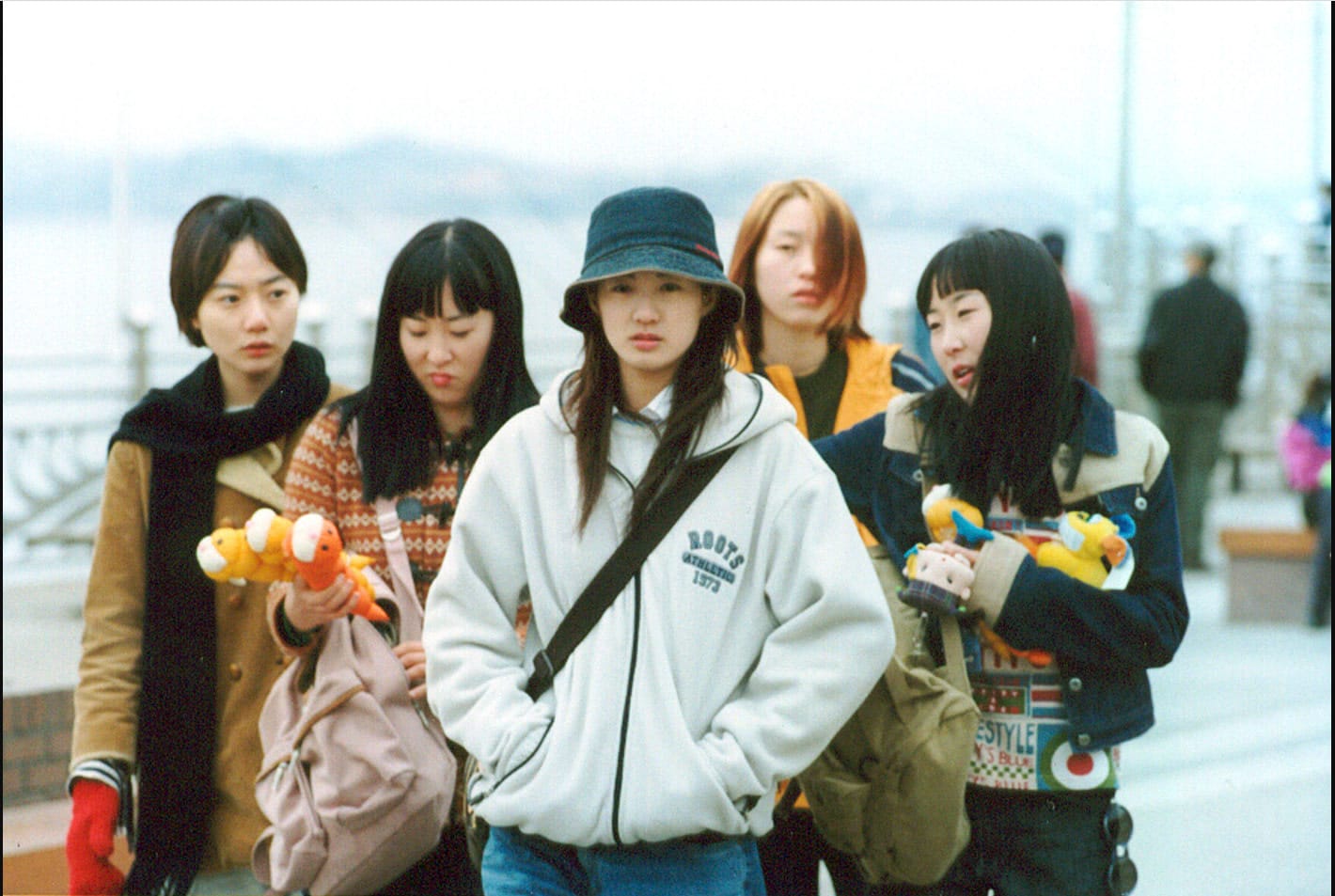
Take Care of My Cat (Jeong Jae-eun, 2001) - August 4, 2023
One of the Fantasia Film Festival’s archival presentations this year is Jeong Jae-sun’s 2001 coming-of-age ensemble film Take Care of My Cat. The movie was a critical hit when it premiered in 2001, playing around the world on the festival circuit at a time when Korean cinema was just beginning to break out internationally. Though not a commercial hit at home, it did help launch star Bae Doona’s career, along with her work for Bong Joon-ho in Barking Dogs Never Bite and Park Chan-wook in Sympathy for Mr. Vengeance. Bae has since become one of the great stars of world cinema, with classic films in Japan (Linda Linda Linda, Air Doll), the US (for the Wachowskis in Cloud Atlas, Sense8, and Jupiter Ascending) and at home (The Host, Chang-Ok’s Letter, A Girl at My Door, Next Sohee, Broker). Bae leads the ensemble here, a group of five young women, friends from high school who, a year after graduation, find themselves growing apart as they have various troubles adapting to adult life. Each in turn, some more briefly than others, will be the caretaker for a small kitten, giving the film its title and the chance to be described, more or less misleadingly, as “Sisterhood of the Traveling Pants, but where the pants are a cat”.
Bae plays Tae-hee, who has spent the last year working for no pay at her father’s hot stone massage spa. Hae-joo, played by Lee Yo-won, is the only one of the group to have a real job, working at a brokerage firm, albeit as an assistant. Ji-young (Ok Ji-young) is a fine artist but is unable to find paying work and lives with her grandparents in a crumbling shanty town. Twins Bi-ryu and Ohn-jo happily live together and sell homemade jewelry on the street, they seem to be doing fine and mostly hang around the edges of the film, stepping up when necessary for some comic relief or a bit of stability. The class separation between Hae-joo and Ji-young is the film’s central conflict, and its correlation to the disconnections in Korean life are hard to miss, both generational (the grandparents’ and their peers who grew up during the various mid-century wars versus the children who grew up in a time of economic expansion and after the end of martial law) and economic (the widening class differentials that come about when a country modernizes under capitalism, enriching some but definitely not all, of a populace).
But more than that, Take Care of My Cat is about these specific women and the strategies they employ to cope with the changing world around them. Yo-won, increasingly hollowed out and made shallow by the trappings of her success, becomes more and more cruelly indifferent to Ji-young’s suffering, while Ji-young retreats further and further into herself, eventually shutting down entirely (and finding herself in jail because of it). Tae-hee for most of the film navigates between them both. She isn’t as greedy as Yo-won, but she’s dissatisfied with her family’s expectations that she work for free (and the fact that they seem to expect her, as a woman, to serve the men, her father and brothers, who, unlike her, are given the opportunity to go to college). A good and bold person with an independent streak, she considers running away to join up on a merchant ship, like a Korean Melville. She also spends her free time volunteering as a typist for a poet with cerebral palsy. He doesn’t use a computer, rather an old typewriter, which, as Tae-hee notes, gives the words a satisfying clickity-clack. Text surrounds our heroes: early adopters of SMS technology, they’re constantly sending each other text messages, visualized by Jeong as characters superimposed on various surfaces (walls, desks, buildings) that make up their environment (I don’t recall seeing any film made prior to this that displayed text messages so creatively). They were the first generation to come of age where the boundaries between physical and digital spaces were porous, where friendships could be built up, and broken apart, through words on screens as easily as in-person interactions. But the things breaking them up—class differences, family pressure, work commitments, betrayal of once-cherished values—remain depressingly familiar.

River (Yamaguchi Junta, 2023) - August 4, 2023
Yamaguchi Junta’s Beyond the Infinite Two Minutes was a delightful no-budget time travel comedy that hit the scene a couple of years ago, delighting audiences with its audaciously simple premise (a man discovers his computer monitor is linked to a monitor downstairs which displays events that will take place exactly two minutes into the future) built upon in ingenious ways with a handful of actors in a single location. Yamaguchi, again united with writer Ueda Makoto (The Tatami Galaxy, Night is Short Walk on Girl), returns this summer with yet another two minute temporal anomaly, on an ever so slightly larger scale but with just as delightful results.
This time it’s a time loop film: workers and residents of a traditional Japanese hotel find that their world resets itself every two minutes. Unlike in Mondays, a time loop film which played at this years Japan Cuts, or other time loop stories (the Star Trek: The Next Generation episodes “Cause and Effect” or "Time Squared” the latter of which gave Orbital the essential sample, “There is the theory of the Möbius–a twist in the fabric of space, where time becomes a loop”) everyone is quite aware of what is happening right from the beginning. The drama comes from watching everyone try to figure out what has caused the time loop, and what they can do to fix it. Yamaguchi films every two minute section in continuous takes, probably shot on a telephone or some similarly lo-fi digital camera, like the long takes in Beyond. A probable concession to the realities of low-budget filmmaking, but one which adds an especially surreal edge to the looping is that the weather outside is always changing: beginning to snow in one scene, dry and sunny the next, snow covering the ground in the one after that. Time isn’t just repeating: the people of the hotel have become disconnected from the space around them as well.
Leading us through it all are the workers, as one by one they get together and try to reassure the patrons that what is happening is real and that they are going to find a solution eventually. This provides the film’s funniest moments, as these unflappable women explain to panicking vacationers how delightful it is to be stuck in a time loop (they can drink without getting a hangover! eat without gaining weight!), while wondering if they’ll get paid overtime for all these extra minutes they have to work. Our primary character is Mikoto, played with resolute charm by Fuijtani Riko, one of the stars of Beyond the Infinite Two Minutes. It turns out that she has a crush on one of the kitchen staff, and, learning he plans to go away to Paris to learn French cuisine, made a hasty wish to the local river god to stop time. This is the first theory as to why the time loop started, and it gives everyone else the opportunity to blame and then forgive her, but also the young couple an opportunity to spend some precious time together to see what kind of relationship they could actually have (time that otherwise wouldn’t be possible given work requirements). The cause turns out to be something else entirely, which pads out the running time of the film (a bit longer than Beyond’s 70 minutes), but also shows us how many people really do wish time could slow down or stop for awhile, though of course, when it actually does, their first instinct is to panic or fight or shoot themselves. The end result is exactly as kooky and homemade as it should be.

Following the Sound (Sugita Kiyoshi, 2023) - August 25, 2023
2023 will surely go down in history as the year Ogawa An owned the international festival circuit. OK maybe not really, but this is the third film I’ve reviewed this year that she starred in, along with Berlin’s There is a Stone and Japan Cuts’s Plastic. Following the Sound more resembles the former than the latter, being the kind of festival film where the mystery in the plot involves figuring out what exactly the plot is. Or, looked at more productively perhaps, the kind of movie where the specifics of plot and backstory don’t matter because the narrative is an emotional one, a vibes-based art cinema. For those who read these things, the festival description gives more narrative information than the actual movie does. Although, hilariously, the plot descriptions given in the catalogs for the Venice and Marseille festivals don’t quite say the same thing, as if even the festival programmers (or director Sugita Kiyoshi and his PR team, whoever it is that writes this stuff) are taking their best guess as to what happens in the movie and why.
Ogawa plays a young woman who meets and befriends a couple of seemingly unrelated older people, a man and a woman. The meetings are possibly by chance or possibly on purpose, and she may have met both of them some time before (they both tell her she seems familiar). In between hanging out with these people, Ogawa does other stuff: she takes a filmmaking class, she works at a bookstore that sells tea and doughnuts, she meets people at a coffee shop. She also spends time listening to an old cassette tape of some kind of white noise, possibly a river, and tries to track down where it was recorded. The woman accompanies her on these trips, which have something to do with Ogawa’s mother, apparently deceased and apparently the source of the recording. With the man, Ogawa helps film a script his daughter has written, employing many of the people we’ve met throughout the movie.
Sugita films this all in a tastefully mellow art house style, a smoothed out, more accommodating and less alienating version of the minimalism that’s been one of the standard forms of festival-friendly cinema for decades. Absent plot, the film relies for emotional impact almost entirely on Ogawa’s quiet performance, her big expressive eyes to suggest all the hidden layers of sadness buried deep within this slow cinema Amélie. The film floats along on its mood of gentle melancholy, the interest in individual scenes based almost entirely on the actions on screen and not their connections to a wider plot or backstory, which Sugita never bothers to explain. There’s a scene where the class films a woman playing piano; there’s a scene where a young couple brings a newborn baby to the café; there’s a scene where Ogawa reads a story to a toddler. All of these are possibly interesting in themselves, or possibly not: the viewer will get out of it what they’re willing to put into it. This approach is nothing new to international cinema, of course. Indeed, There is a Stone had much the same conceit, its tension coming from the fact that we never knew exactly what its two characters were intending or thinking at any given moment. But Following the Sound is so close to being a conventional movie, like it was written as a straight-forward narrative but then just went and deleted a couple of pages of exposition, turning it into a different kind of movie entirely. That’s either what makes it interesting, a playful experiment in film form; or utterly conventional, just another festival film that rides the circuit for a few months and disappears, a way point on a potentially interesting filmmaker’s journey to someday making a really good movie.

A Light Never Goes Out (Anastasia Tsang, 2022) - July 13, 2023
Handover Syndrome is a phenomenon wherein critics, mostly Western critics, read into every Hong Kong movie produced in the period between the Joint Declaration in 1984, when it was announced that the colony would be returned to the Mainland, and 1997, when the Handing Over took place, some kind of statement about the anxiety over that process and the future it promised. We’re in a similar place right now, as ever since the crackdown on the mass protests of 2019-2020, seemingly every Hong Kong movie, and every Chinese movie made by Hongkongers working within the Mainland system, can be read as a statement on the relationship between the two entities. Partially, that’s just the nature of film: it’s easy to manufacture a political reading of just about any movie, and Western critics tend to know very little about Hong Kong and Chinese politics, so their reading tends to be about the One Thing they do know (the colony was handed over to China; the police cracked down on demonstrators). But just because a reading is obvious doesn’t mean it isn’t true. A lot of Hong Kong films made between 1984 and 1997 are about anxiety over the Handover. And a lot of present-day Hong Kong films are about anxiety over Hong Kong’s increasing integration into the PRC system. Many of these take a sidelong approach to the subject, evoking nostalgia for Hong Kong as it used to be. A Light Never Out is just such a film.
On its surface, it’s a straightforward narrative about the dying art of neon sign-making, about the transformation of Hong Kong from a chaotic mass of colors and lights and people into a sleek modern city of chrome and glass. It doesn’t take much imagination though to read this as a story of life under the PRC. Where once was a laissez-faire paradise where art flourished alongside and within even the most garish of commercial interests, there is a now a tamed, structured metropolis, indistinguishable from any other major city in the world, ruled by the interests of organized capital and the state (which more often than not amount to the same thing).
The sign-makers’ art is almost dead because it has been legislated away: no more massive marquees hanging over the sidewalk (they are dangerous), the signs evolving (devolving) from incandescent neon to computerized LEDs (not unlike the move from 35mm film to digital cinema) because they’re cheaper and easier to mass produce. There’s no counter-argument in the film, no suggestion that LED signs can be art just as well, or that neon too was once the new-technology replacing an older, more humane one, such as sign-painting, the commercial art practiced for 40+ years by my father-in-law. This is one clue as to the film’s true purpose: there’s no room here for nuance, for the long view of history, or reasoned consideration of the other side. This is nostalgia with a purpose: are we on the side of light, or are we on the side of grayness.
One key to the modern Hong Kong nostalgia film is the use of older stars, and A Light Never Goes Out has two of the best in Sylvia Chang and Simon Yam. Chang plays Yam’s widow, mourning his death and remembering him in flashbacks interspersed throughout the film. She and his former apprentice, played by young actor Henick Chou (who also appears at this year’s New York Asian Film Festival in Vital Sign), spend most of the movie trying to first figure out and then fulfill what was sign-maker Yam’s dying wish: to recreate one of his past signs that had since been torn down. In the process the film touches on a number of issues: the grief of a woman who has lost her husband (Chang won the Best Actress Golden Horse award for her performance); the disconnect between the older generation and the younger, embodied in Chang’s fraught relationship with her exasperated daughter, played by Cecilia Choi, who is on the verge of emigrating to Australia; the difficulty of making a living and affording housing in contemporary Hong Kong (the apprentice, a high school dropout, is squatting in Yam’s old workshop); and the process of making neon signs: drawing designs, bending glass, making light.
But mostly it’s a movie about how the past is disappearing all around us, and the beautiful things we’re losing because of that. Director Anastasia Tsang, making her feature debut, uses as interludes archival footage of old Hong Kong, the vibrant neon signs hanging over the busy streets seemingly embodying the life of city. These fade into shots of the same streets as they appear today, with all the life drained away from them. And over the final credits, she introduces us to a number of still-living sign-makers, with images of their work and information on when it was destroyed. Commercial art is by its nature compromised and ephemeral. Hong Kong is no different: always corrupt, always changing. Tsang’s polemical nostalgia gives us an idealized view of that past, and someone to blame for the degraded present: told that the old neon signs are no longer possible because of all the new laws that have been adopted regarding construction and public spaces, Chang shouts “Your new laws are illegal!” A sentiment that could have come from any student demonstrator over the past decade.
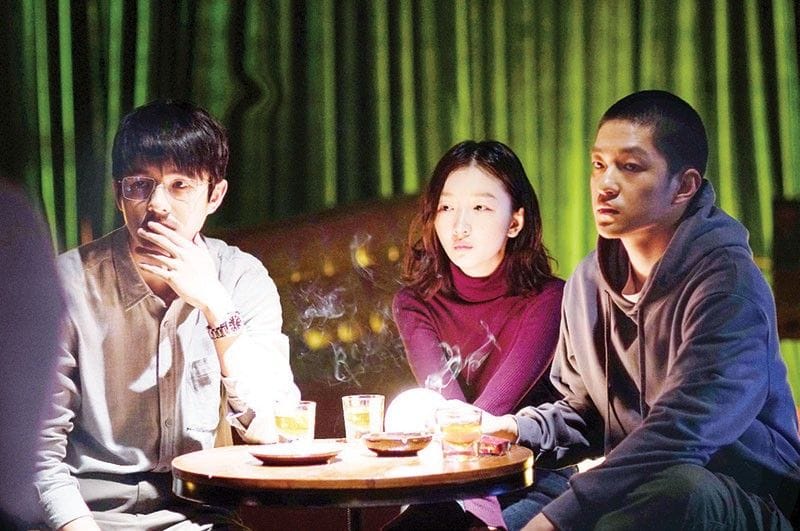
The Breaking Ice (Anthony Chen, 2023) - September 12, 2023
Singaporean director Anthony Chen’s most impressive accomplishment to date probably came at the 2013 Golden Horse Awards, when his debut feature, Ilo Ilo, won the Best Picture prize, beating out Tsai Ming-liang’s Stray Dogs, Wong Kar-wai’s The Grandmaster, Johnnie To’s Drug War, and Jia Zhangke’s A Touch of Sin. His second film, Wet Season, is a pretty good, if a bit generically plotted, May-December romance story between a teacher and one of her students. The relationships are complex and nuanced, helped by a terrific lead performance from Yeo Yann Yann (lately seen on the Disney+ TV series American Born Chinese alongside Michelle Yeoh and Daniel Wu). His third feature, an English language film starring Cynthia Erivo and Alia Shawkat, premiered earlier this year at Sundance, and his fourth, The Breaking Ice, a Mainland Chinese production, premiered at Cannes and is now playing at TIFF.
The Breaking Ice is, unlike the dense Wet Season, almost entirely vibes-based. Liu Haoran (star of the Detective Chinatown series) plays a lonely young man from Shanghai who finds himself in Yanji, a town on the frozen border between China and North Korea. Wandering around, he meets and befriends a tour guide played by Zhou Dongyu (Soul Mate, This is Not What I Expected) and her friend who works in his aunt’s restaurant (Qu Chuxiao, from The Wandering Earth). The three roam around the town for a few days, drinking, dancing, seeing the sights, trying to walk up to a remote mountain lake, slowly revealing tiny bits of the backstory that led them to be sad twentysomethings.
Most of those backstory bits are left vague, which is fine because they don’t really matter anyway. Zhou gets something close to a coherent story, but the two men really don’t. We know they’re melancholy, unfulfilled, but we don’t care why because most people their age are probably like that anyway. Zhou’s story, something about being a figure skater and injuring her foot, seems petty in comparison to whatever it is that we imagine the near-but-not-quite-suicidal Liu is going through. In less confident hands, we would have had this all spelled out. Similarly, another director might have played up Zhou’s quirkiness, framed things almost entirely from Liu’s perspective, and given us a kind of Chinese Garden State (God forbid). Instead, Chen just lets his three actors wander around, finding small bits of business for them to do (eating noodles in a park at 4 am, trying to steal books from a bookstore, having somewhat awkward sex), and it’s all the better for it. Many of the images Chen finds are quite lovely, if conventional: the snowy mountain, walls of lights, various clubs of probably just as disaffected youths enjoying the various singers on-stage, a maze built out of colored blocks of ice that might as well have a big sign with the world “Metaphor” posted on it in blinking lights. It’s a less rigorous, and thus somewhat more mainstream-appealing, Millennium Mambo.
